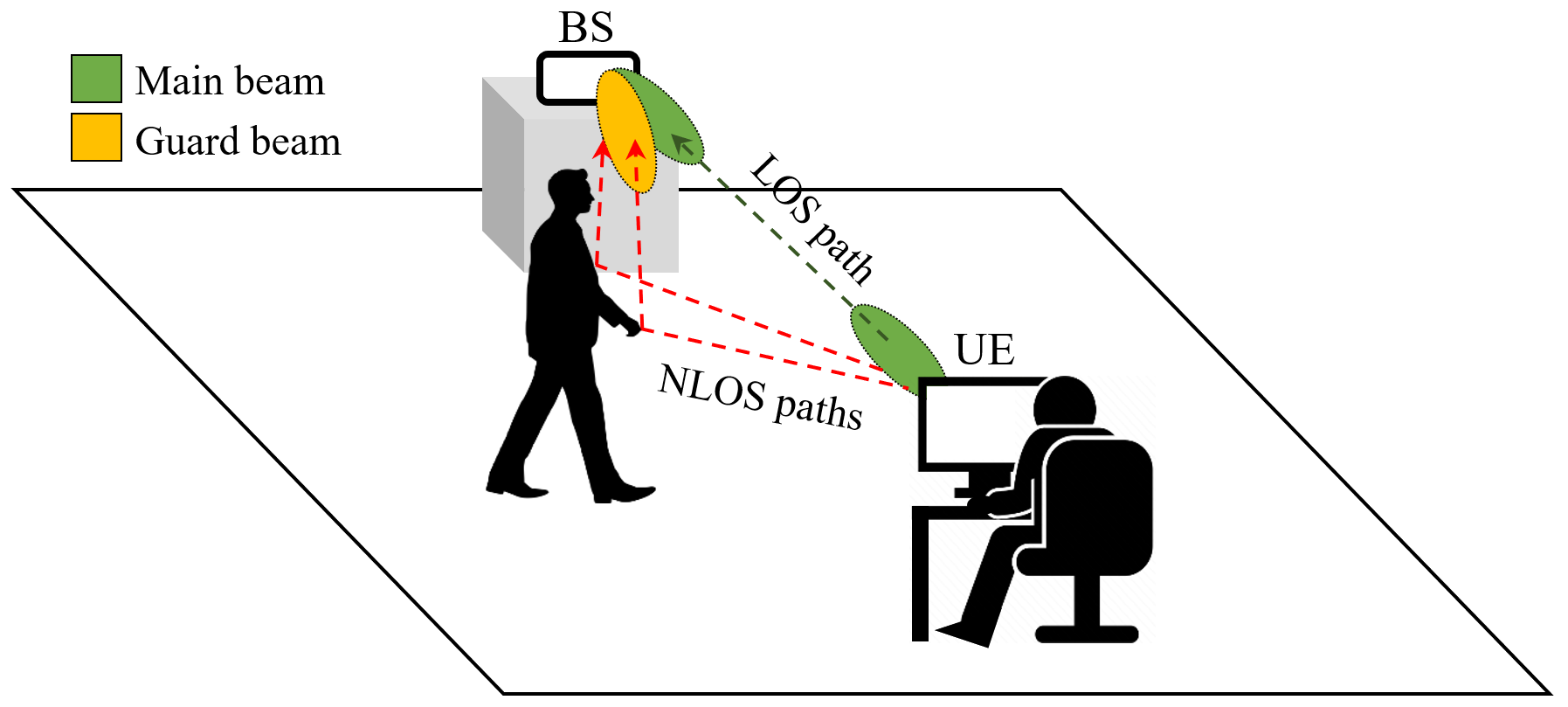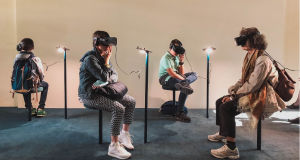Published on: Jan 13, 2023
It’s annoying when your video stream is stopped in the middle of your favorite show. In mmWave this can happen just because someone is walking and blocking your mmWave link. This is because the human body can easily shadow the mmWave link, thus causing significant link attenuation and communication interruption in the order of a hundred milliseconds [1]. These hundred milliseconds become significant considering the multi-Gbps data rate provided by a mmWave connection. Therefore, predicting human blockage before it happens becomes very important for mmWave communication, allowing mmWave stations to take necessary preventive action to avoid link degradation and interruption.
There have been several methods for predicting and detecting human blockage in mmWave by utilizing the inference information acquired from other sensing systems such as camera [2], Radar [3], LiDar [4], and sub-6 GHz [5]. Nevertheless, those approaches require an additional system, thus increasing the implementation cost and complexity of a mmWave system. Another interesting approach is by using in-band detection or the mmWave communication signal itself to detect the presence of a blocker. The authors of [6] propose a human blockage detection method utilizing a “pre-blockage signature” which is a fluctuation of the received signal level observed just before the shadowing occurs. Using this approach, no external system is required for detecting potential blockers.
Although this works well, the blockage prediction time provided by sensing through the communication beam is quite short, thus giving the mmWave system limited time to take a required action such as handover, which includes association and beam training with the secondary APs and typically requires up to couple hundred of milliseconds to complete. Therefore, the potential blockage has to be detected as early as possible to give the mmWave system sufficient time to prevent and alleviate the impact of human blockage.
To solve this problem, we propose a solution called the “Guard Beam”. Guard Beam is an additional beam that receives Non-Line-of-Sight (NLOS) components resulting from the reflection and scattering from the human body [7]. The definition of the Guard Beam and the occurrences during the pre-blockage event, which will be used for detecting the potential blockage that are discussed in what follows.

Fig. 1. Guard beam illustration [7]
Guard beam [7]: As its name implies, “Guard Beam” is meant to protect the mmWave communication beam from being blocked by human beings (see Fig. 1). It is an additional passive receive beam implemented alongside the mmWave communication beam to expand the field of view and detection range. This way, the potential blocker can be detected earlier when it is still far away from the directional link.
Let’s start with what happens when the human blocker approaches the mmWave Line-of-Sight (LOS) link. Although the communication beam is directional, there will be some signal power radiated on the side of the beam, with a lower gain than the main lobe. When a human approaches the mmWave link, these components will be reflected and scattered by the human body with a certain reflectance, and some of them will be received by the mmWave receive beam as interference. These NLOS components can cause constructive or destructive interference, depending on the phase. A constructive one causes a higher amplitude, while a destructive one leads to a lower received signal level. These explain why the received signal level fluctuates during pre-blockage events.
Since the beamwidth of the transmit and receive beams are narrow, the NLOS components transmitted and received outside the peak will have a low gain. Furthermore, this narrow beam limits the field of view of the transmitter and receiver. By having an additional receive beam -the guard beam, which is steered at a certain angle from the main communication beam – the receiver field of view can be expanded. Fig. 2 shows the simulated receiver field of view comparison between the main beam and two different configurations of guard beam where ΘR and ϕ indicate the Rx beamwidth and guard beam’s steering angle, respectively.

Fig. 2. Field of view of various beam configurations [7]
The color difference in Fig. 2 indicates the received signal fluctuation due to the blocker’s presence near the link between the transmitter (Tx) and the receiver (Rx). The detection range is quite limited when only the main beam is used for blockage detection, as the received signal fluctuation is only observed up to around 200 mm from the Tx-Rx link. With the guard beam, the fluctuations can be observed further away, demonstrating the increased detection range, and thus making the blockage detectable early. We’ve conducted measurements to validate the idea and evaluate the blockage prediction time. In general, the measurement results agree with the simulation results, where the guard beam outperforms the detection using the main beam only in terms of the prediction time. The guard beam can detect the blockage up to 360 ms earlier before the actual shadowing happens, giving the mmWave system enough time to perform the handoff process.
We encourage you to read the full article “Guard Beam: Protecting mmWave Communication through In-Band Early Blockage Prediction” [7] for more explanation about the guard beam and how far and early it can detect human blockages.
References
[1] C. Slezak, et.al, “Empirical Effects of Dynamic Human-Body Blockage in 60 GHz Communications,” in IEEE Communications Magazine, 2018
[2] Y. Koda et al., “Handover Management for mmWave Networks With Proactive Performance Prediction Using Camera Images and Deep Reinforcement Learning,” IEEE Transactions on Cognitive Communications and Networking, 2020
[3] U. Demirhan and A. Alkhateeb, “Radar Aided Proactive Blockage Prediction in Real-World Millimeter Wave Systems,” IEEE International Conference on Communications, 2022,
[4] D. Marasinghe, N. Rajatheva, and M. Latva-aho, “LiDAR Aided Human Blockage Prediction for 6G,” in IEEE Globecom Workshops, 2021
[5] Z. Ali, A. Duel-Hallen, and H. Hallen, “Early Warning of mmWave Signal Blockage and AoA Transition Using sub-6 GHz Observations,” IEEE Communications Letters, 2020,
[6] S. Wu, et.al, “Blockage Prediction Using Wireless Signatures: Deep Learning Enables Real-World Demonstration,” in IEEE Open Journal of the Communications Society, 2022,
[7] R. Hersyandika, et.al, “Guard Beam: Protecting mmWave Communication through In-Band Early Blockage Prediction,” accepted in IEEE Global Communications Conference, 2022. https://arxiv.org/abs/2208.06870





